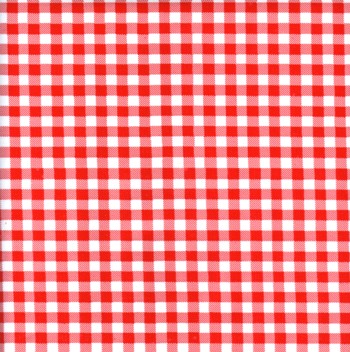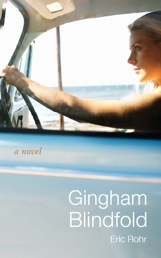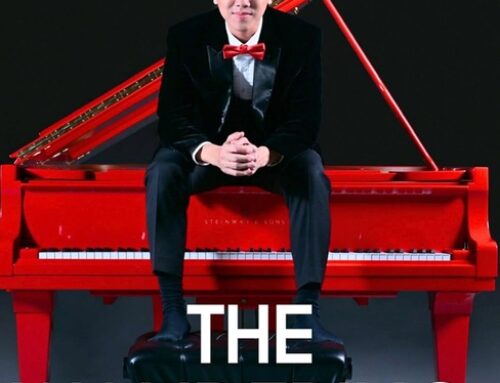
Page One Review is a review of a self-published book’s first page. Read the first installment here.
First: This looks like two pages, but it equates to one full page of text. And it’s a cropped cut; Eric Rohr didn’t begin his book with the sloppy look of no top margin. There is, in fact, plenty of top margin on Rohr’s first page, which is why I snagged a shot of a one-and-some page.
Second: I don’t know how I feel about the cover. And because this is Page One Review and not Cover Review, I’m not obligated (nor asked) to say anything about it. The only reason I do is simply because it leaves me feeling conflicted. I’m intrigued by this woman who is clearly going somewhere in her car. I’m a woman, I have a car, and I like going places in it. How could I not identify? On the other hand, as much as the picture may reveal itself to be an accurate reflection of the story, it doesn’t mesh with the title that had me wanting to see a stark image of a lone blindfold lying on cement, and at the same time had me running to google to find out what the hell “gingham” is. (Is this something everyone else knows?)
If you, like I, had no earlier knowledge of gingham, here’s what I learned from wisegeek.com: gingham first appeared in the 17th century and is a printed or dyed fabric originally intended to be woven into stripes. But here’s what I thought was most interesting from a literary standpoint: “The appearance of gingham, especially when made as an all cotton fabric, is that of a flat luster. Many manufactures of gingham will treat the fabric to make it wrinkle resistant, since gingham tends to wrinkle very easily. However, gingham is a midweave fabric that wears well, and also is easy to clean.”

Believing, as I do, that all writers (should) use all words (or fabrics) for a reason, I’m now wondering, “Why gingham? Did Rohr choose it because of its resilience? Its flat luster? The wrinkles? Because people treat it to make it not wrinkle? What does ‘gingham’ say about whoever wears this blindfold? Who IS wearing the gingham blindfold (symbolically or otherwise)?”
Also, if—as I suspect—“gingham” is an intentional fabric choice, this must mean more carefully-chosen words or objects will be used inside the book, and if that’s true, there will be much to enjoy and even muse over while reading. Musing is a literature-inspired activity I greatly appreciate, as it’s most often inspired by thoughtful and complex writing.
Once beyond the cover and into the first page, I’ll admit I let myself go on to page three. What can I say? It’s difficult to put down a book that begins with a discussion about masturbation, and even harder for me, personally, when one of the first named characters is Kristen. With an “en.”
But, too, I was attracted to the long first sentence, amused by the idea of there being a wire report—a wire report!—about masturbation trends among 18-24 year olds, and intrigued by the immediately implied conflict between the narrator and Kristen, who clearly have very different opinions about “acceptable” sexual discussion, if not behavior.
I’m a sucker for a relationship conflict, and if that conflict takes me into the very private emotional and sexual lives of a couple in a way that rings true and real, I’m fairly well hooked. I want to read more of Rohr’s Gingham Blindfold.
Get an Editorial Review | Get Amazon Sales & Reviews | Get Edited | Publish Your Book | Enter the SPR Book Awards | Other Marketing Services
























Leave A Comment